
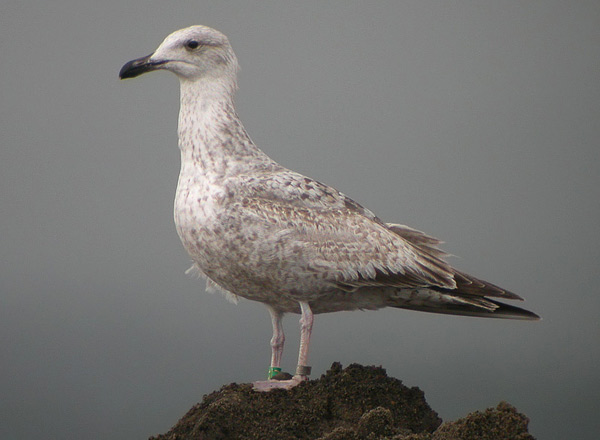
1-2: © Ruud Altenburg, 17-05-07. Both plumage and structure indicate that green 77P2 obviously has Herring Gull L argentatus-roots. In the field, it also showed traits of Caspian Gull, even though admittedly this doesn't show very well in the pictures (but note the relatively long wings and bill). It was ringed as pullus in a L argentatus colony near Włocławek, C Poland on 07-06-06.

3: © Ruud Altenburg, 21-05-03.
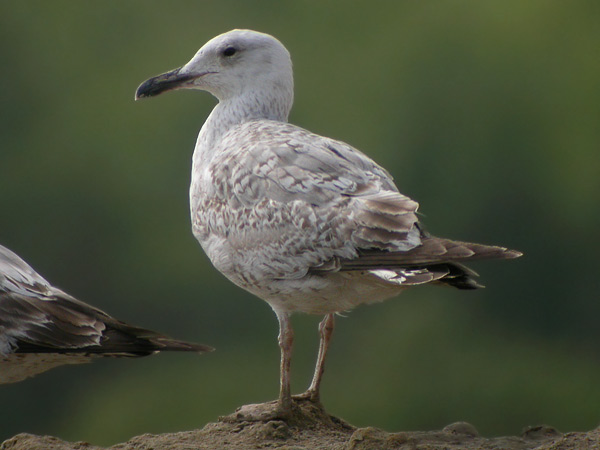
4: © Ruud Altenburg, 17-05-07.
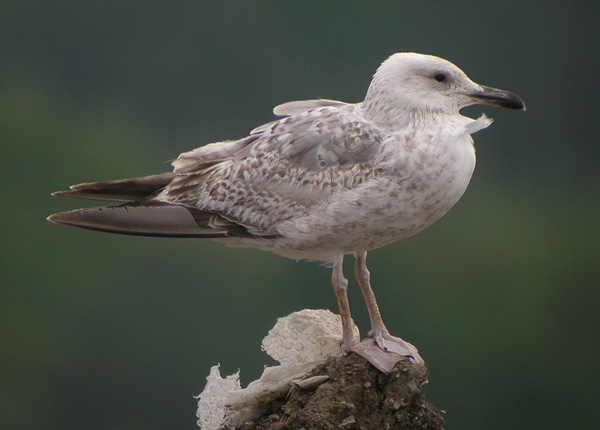
5: © Ruud Altenburg, 23-05-07. Pictures 4-5 possibly depict the same individual. Again, the birds in 3-5 seem to share characters of both argentatus and cachinnans.
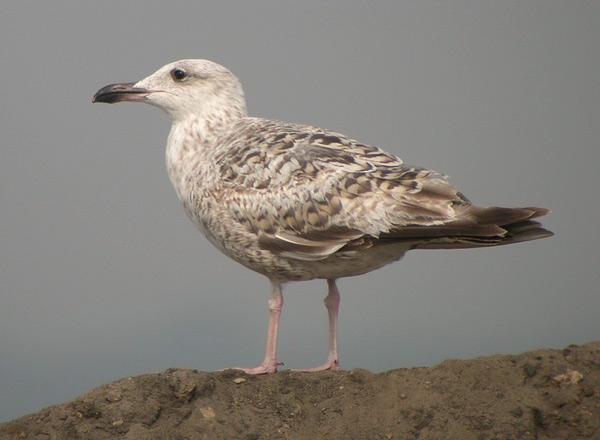
6: © Ruud Altenburg, 23-05-07. Closest to Yellow-legged Gull L michahellis I would say but note the peculiarly short legs.
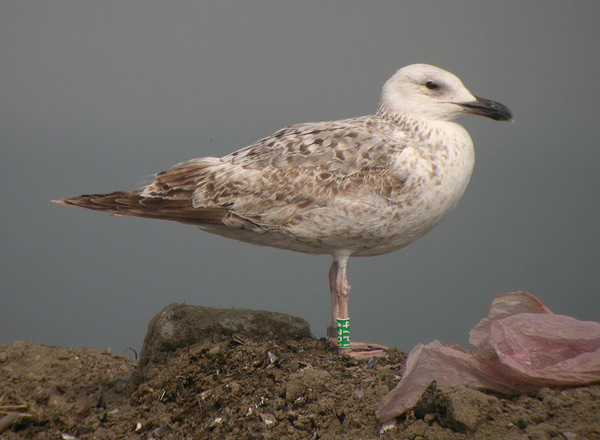
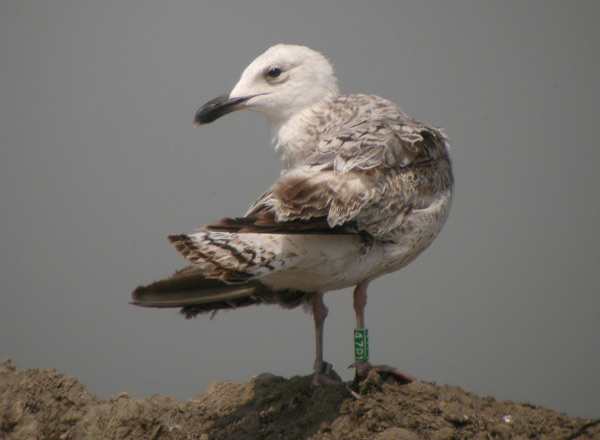
7-8: © Ruud Altenburg, 23-05-07. If I have to guess I would say that michahellis and cachinnans are involved here, but frankly I really don't know. Note the tail pattern which seems closest to Greater Black-backed Gull L marinus! Green 47P1 was ringed as a pullus in a L cachinnans colony near Włocławek on 18-05-06.
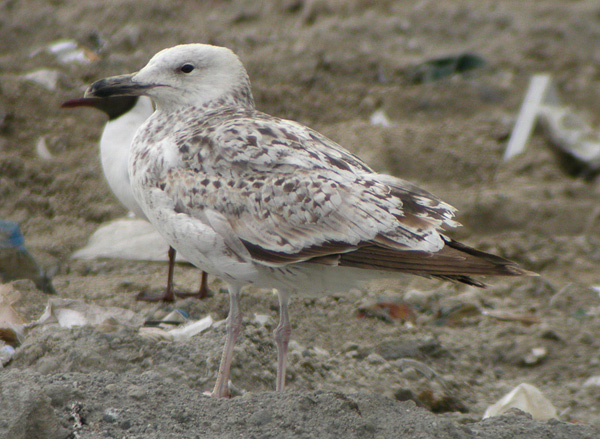
9: © Ruud Altenburg, 17-05-07. My understanding of the variation in Caspian Gull is very limited unfortunately, so I can't tell if both this 2cy and the bird below represent a more unusual phenotype or that there is influence of michahellis at stake.
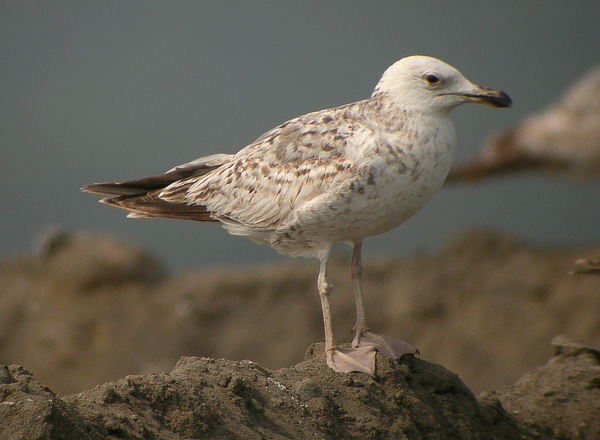
10: © Ruud Altenburg, 23-05-07.
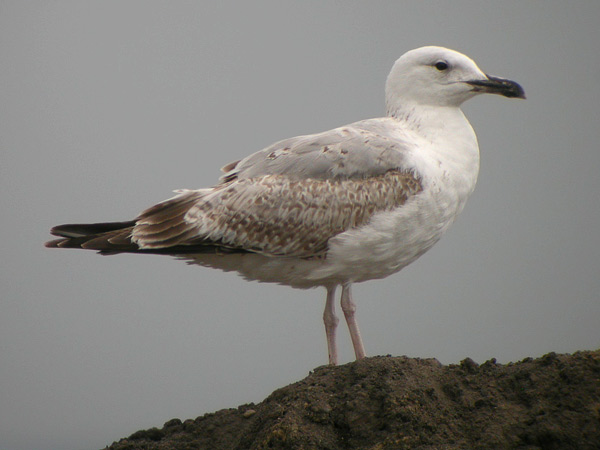
11: © Ruud Altenburg, 17-05-07. The caption of 9 can also be applied to this 2cy and the bird below. In my opinion they seem to fit neither cachinnans nor michahellis, even though in this case the characters of Yellow-legged Gull seem to fit better.
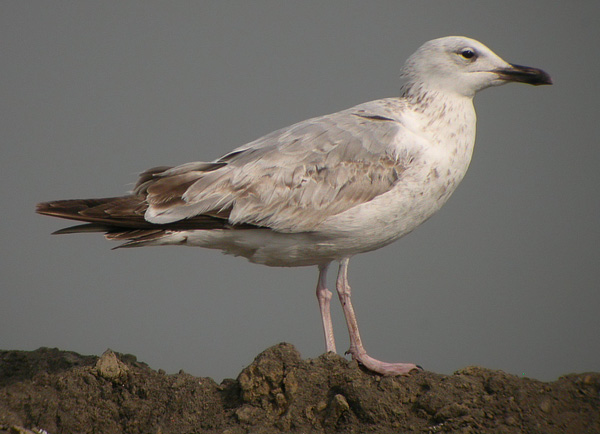
12: © Ruud Altenburg, 23-05-07. Note the adult-like second generation lower tertial, a type of feather I don't expect to see often in pure michahellis.
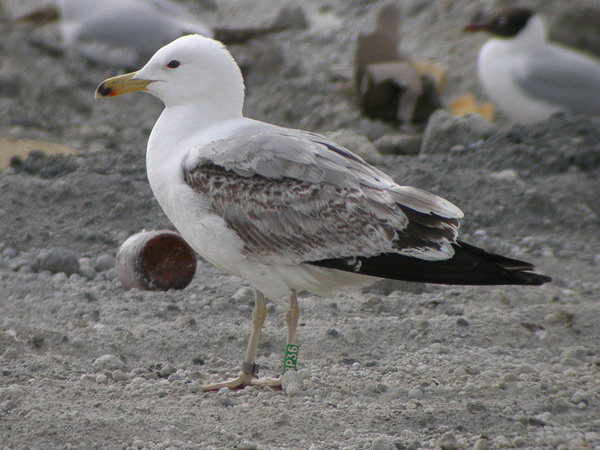
13: © Ruud Altenburg, 17-05-07. This bird is from the Jankowice colony in SE Poland, so most likely it is a pure 3cy Caspian Gull. However, the bill seems rather short and stubby for this species, e.g. compare to these 3cy(/4cy) cachinnans.
| Back | Terug |